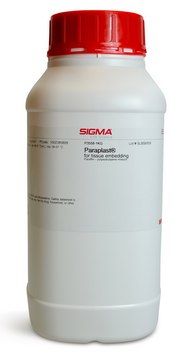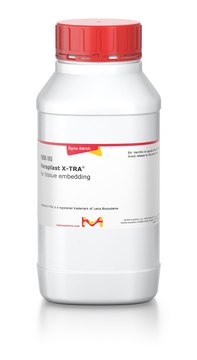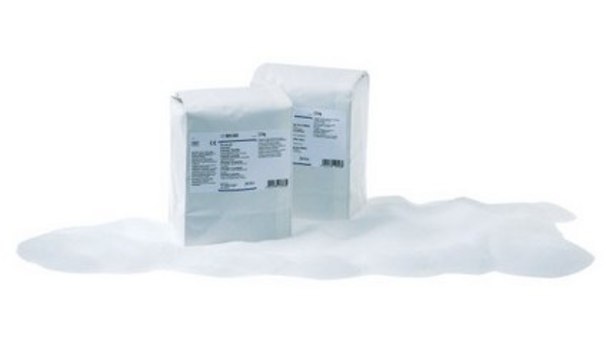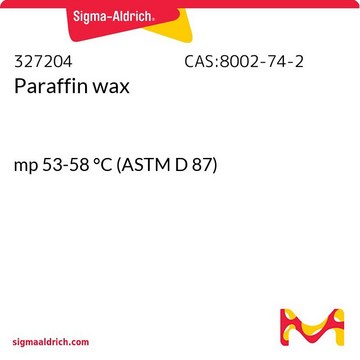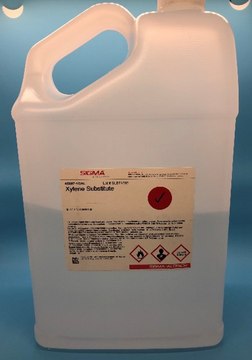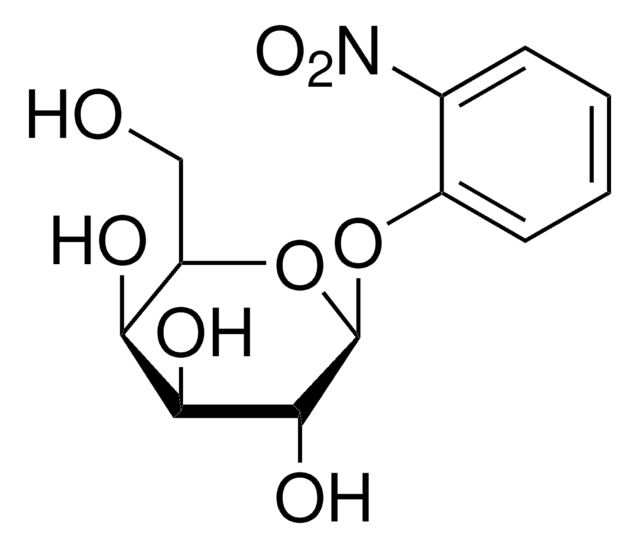76258
Paraplast Plus®
suitable for electron microscopy, pellets (fast-melting)
Synonym(s):
Paraffin – polyisobutylene mixture
Sign Into View Organizational & Contract Pricing
All Photos(1)
About This Item
Recommended Products
form
pellets (fast-melting)
Quality Level
technique(s)
electron microscopy: suitable
thickness
≤1 μm , short ribbons
≤2 μm , sectioning: continuous ribbons
mp
56-57 °C
application(s)
hematology
histology
storage temp.
2-8°C
General description
regular Paraplast with approx. 0.8% DMSO added for enhanced ease of infiltration and sectioning
Application
Paraffin polyisobutylene mixture is a tissue embedding medium composed of highly purified paraffin and polyisobutylene and a low level of dimethyl sulfoxide (DMSO) to enhance the rate of tissue penetration. Paraffin-polyisobutylene (76258) supports thin wrinkle-free sectioning down to 4 microM with more flexible and continuous ribbons.
Legal Information
Paraplast Plus is a registered trademark of Leica Biosystems
Storage Class Code
11 - Combustible Solids
WGK
WGK 2
Flash Point(F)
Not applicable
Flash Point(C)
Not applicable
Personal Protective Equipment
dust mask type N95 (US), Eyeshields, Gloves
Choose from one of the most recent versions:
Already Own This Product?
Find documentation for the products that you have recently purchased in the Document Library.
H O Goyal et al.
The Anatomical record, 250(2), 164-171 (1998-03-07)
Since androgens and/or estrogens must bind with specific receptors in order to elicit a response at the target organ(s), it is important to understand factors that regulate expression of androgen receptors (AR) and estrogen receptors (ER). Hence, the objective of
Ewa Urbańczyk-Wochniak et al.
Cellular & molecular biology letters, 7(1), 7-18 (2002-04-11)
This study describes an effective method of in situ RT-PCR (RT-ISPCR) that was developed to localize gene expression in plant tissues. This RT-PCR technique was performed on sectioned tissues of female buds of the cucumber GY3 inbred line. The CUS1
Jing Qi et al.
Plant physiology, 147(4), 1947-1959 (2008-06-20)
The size and shape of the plant leaf is an important agronomic trait. To understand the molecular mechanism governing plant leaf shape, we characterized a classic rice (Oryza sativa) dwarf mutant named narrow leaf1 (nal1), which exhibits a characteristic phenotype
H O Goyal et al.
The Anatomical record, 249(1), 54-62 (1997-09-19)
Because of the significance of androgens and estrogens in prenatal and postanatal differentiation of the testis and excurrent ducts, it is important to understand the developmental pattern of androgen receptor (AR) and estrogen receptor (ER) in these organs. Tissues from
[Paraplast-plus, a tissue embedding medium that enables sections to stick to the slides without adhesives (author's transl)].
D Arn et al.
Mikroskopie, 31(3-4), 99-106 (1975-06-01)
Our team of scientists has experience in all areas of research including Life Science, Material Science, Chemical Synthesis, Chromatography, Analytical and many others.
Contact Technical Service